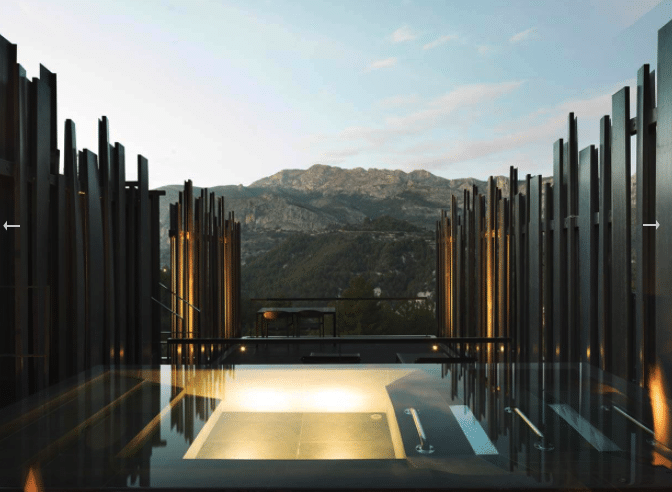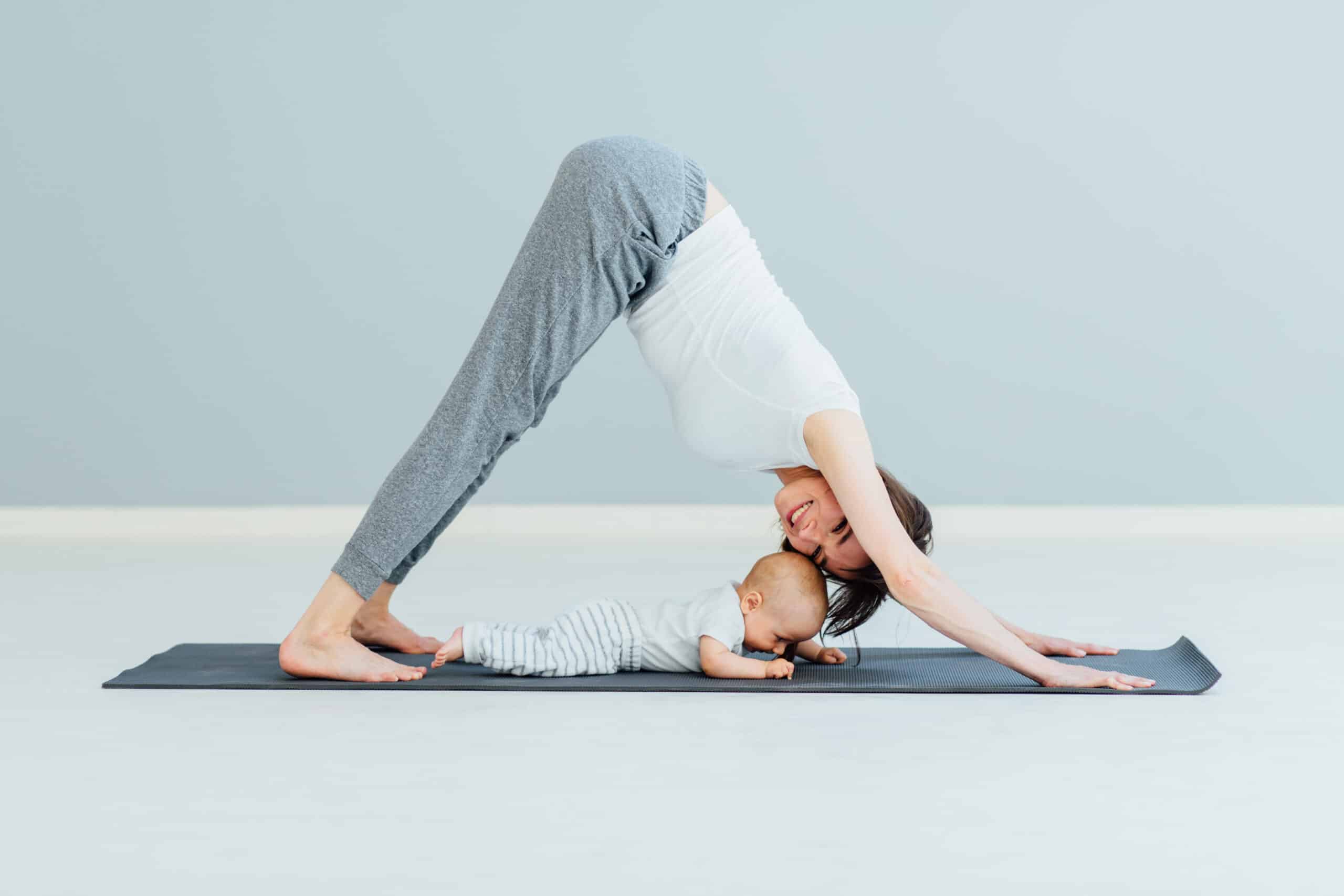The Biophilia Boom: Designing Our Surroundings to Sneakily Boost Our Well-Being
By Karla WalshHome » Live Consciously » The Biophilia Boom: Designing Our Surroundings to Sneakily Boost Our Well-Being
When you think about setting up your environment to boost your well-being, chances are, you might imagine a fruit bowl overflowing with produce, a dust-free room and perhaps a yoga mat unrolled and ready to invite you to flow through several sun salutations.
But biophilia, a design philosophy that’s been gaining momentum in recent years, takes our connection as humans to our environment much further. What’s more? The Global Wellness Summit declares biophilia “not a trend, but the long-term future of architecture and design.”
Learn about the origins of this groundbreaking wellness architecture style, why it matters now and for the future, plus see examples of biophilia IRL that you can experience yourself.
This design style suggests that connecting humans with their natural world—in ways similar to how our ancestors lived—can improve mental and physical well-being compared to life in our current urbanized, industrialized environments.
What is Biophilia, Exactly?
The term “biophilia” was coined by psychologist Erich Fromm in 1964, and rose in popularity in the 1980s when biologist Edward O. Wilson wrote a book about the concept. It’s derived from the Greek words “life” and “love,” so it’s literal translation is roughly “love of life.” This design style suggests that connecting humans with their natural world—in ways similar to how our ancestors lived—can improve mental and physical well-being compared to life in our current urbanized, industrialized environments.
Biophilic design focuses on bringing parts of the natural world into our built environments and surroundings. These parts of nature should also contribute to human health and productivity.
“Biophilic design can reduce stress, enhance creativity and clarity of thought, improve our well-being and expedite healing,” says a report on Improving Well-Being in the Built Environment by Terrapin Bright Green. “As the world population continues to urbanize, these qualities are ever more important.”
The principle suggests that human instinct is to be in sync with nature, and other living beings on the planet. Biophilic homes and spaces incorporate natural materials and patterns, letting in natural light, adding plants, maximizing fresh air and more. Considering Americans spend about 90% of our lives inside, according to the latest estimates from the Environmental Protection Agency (EPA), a bit of biophilia could go a long way.
RELATED: 6 Home Organizing Tips to Make Your Home Feel New Again
Mounting scientific evidence proves that green spaces do a body good. Spending time in nature has been proven to:
- Decrease risk for depression, anxiety and mood disorders
- Increase social interaction
- Improve sleep quality
- Boost happiness
- Improve attention span

Biophilia and Climate Change
It’s not just about our homes, though. Biophilic design practices within public buildings and throughout communities can help improve the wellness factor of the places we work and gather, and even combat climate change. The more plants, for example, the more opportunity for those plants to do things like take in carbon dioxide, filter pollution and quiet noise.
According to the National Resources Defense Council (NRDC), which has implemented biophilic design into its offices, there are three categories of biophilia:
- Nature in a space: Examples include plants, water, fresh air breezes, light, shadows and other natural cues.
- Natural analogues: These elements might mimic the patterns, materials, objects and colors of nature in man-made form.
- Nature of a space: Expansive views, a quiet, cave-like room and other large spatial elements are a few ways to bring this to life.
Within these categories, there are 14 patterns of biophilic design that spell out how to make these concepts a reality in a specific space. All of these patterns can be mixed and matched to personalize an ecosystem for its people and purpose.
As an example of biophilic design, when creating a visual connection between nature and a home, the house should ideally be positioned on a hill looking down a slope to a grouping of shade trees, flowering plants and bodies of water. Signs of its human inhabitants—think a swimming pool made to look like a pond—should be visible too. Though idyllic, this setting may not be realistic for most of us. But you can incorporate as much green into the views out of your windows as possible.
Why Biophilia is Trending Now
While biophilia has been around for decades, it’s recent rise in popularity can be attributed to two factors. First, large cities, including Paris and Singapore, have set ambitious goals to become greener cities by 2030 and 2100, respectively. This includes plans for massive urban forests, car bans and building up rather than out. The World Bank is even promoting how biophilic design can slow climate change and address wellness inequities.
Second, the pandemic has spurred innovation in creating indoor environments that mimic outdoor ones. This way, future shelter-in-place occasions, if they must happen, might not be so isolating and detrimental to our collective mental and physical health. Circadian-inspired lighting, natural air circulation and ample air filtration and rooftop gardens are among the plans many offices and apartment buildings have in mind (or already in use), per the Global Wellness Summit.
Where to Experience Biophlilia in the Wild

Image: Vivood
Some hotels are viewing biophilia as an extra amenity, just like spa services, complimentary breakfast or Wifi. Vivood (pictured above) is positioned within an olive tree forest in Spain, Hotel 48 Nord is tucked inside meadows of France’s Alsatian valley and Sedona’s Ambiente is built right into the city’s mountainous landscape. Vera Iconica is a company that believes “people are a product of their environment,” so they design residential and commercial spaces that have been reimagined to put wellness first. (Take a tour of their reimagined kitchen!)
RELATED: Declutter Your Kitchen, Make Healthier Choices (Yes, Really. And Here’s Why!)
How to Practice Biophilic Design at Home
No need to travel or wait for your city or state to pivot; you can add a bit of biophilia to your home this week. Here are five affordable, easy ways to add wellness architecture elements to your own home or office:
- Shift your desk so it’s near a window. Natural light will boost vitamin D levels and may increase productivity while reducing risk for seasonal affective disorder.
- Keep the curtains open during the day so the natural light can help guide your daily rhythm.
- Add houseplants, cut flowers or, if you’re allergic, nature-themed art which can help reduce mental fatigue.
- If you live in an area that’s moderate to high in air pollution levels, consider investing in a HEPA air purifier to improve indoor air quality.
- Listen to nature sounds, like birds chirping or rain falling, to simulate a natural experience.
(Images: Shutterstock)
Health, Food, Wine and Relationship Writer + Cooking and Wine Event Host
DISCOVER MORE
RECENT ARTICLES

Want a sneak peek inside the program?
Get FREE access to some of the core training materials that make up our signature program – Become a Nutrition Coach.
Get Access Live Consciously
Live Consciously













































































































































































































































































































































































































































































































































































































































































































































































































































































































































































































































































































































































































































































































































































































































